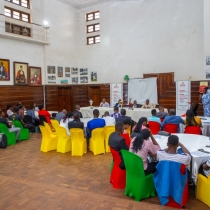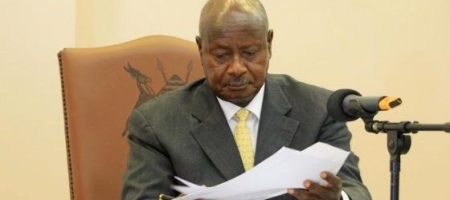
Oil Pipeline Construction to Boost Uganda's GDP by 22%
Uganda will see its current Gross Domestic Product (GDP) grow by 22% by the end of construction of the East African Crude Oil Pipeline (EACOP), Dr. Mary Goretti Kitutu, the minister of Energy and Mineral Development, has said.
According to the minister, Uganda’s GDP, which is expected to reach $40.1 billion in 2020/21 “will significantly be boosted through sectoral linkages by close to USD 9 billion” by the time the pipeline construction is complete.
This past Sunday, three key agreements were signed unlocking a number of investment opportunities that will pave way to Uganda’s first oil, which is expected in four years.
The three agreements are the Tariff and Transportation Agreement (TTA), the Host Government Agreement (HGA) between the Government of Uganda and the EACOP Company, and the Shareholders Agreement (SHA).
[The shareholders are: Uganda National Oil Company (UNOC) with 15%, Total (62%), CNOOC Uganda (8%) and the Tanzania Petroleum Development Corporation (15%)].
The EACOP company will now award the main Engineering, Procurement and Construction (EPC) contracts so the construction work for the projects can proceed.
According to Minister Kitutu, a number of multibillion dollar projects will also commence, namely: the implementation of the Tilenga Project in Buliisa and Nwoya districts (approximately US$4 billion), the Kingfisher Project in Hoima and Kikuube Districts (approximately US$1.5 billion), and the East African Crude Oil Pipeline (EACOP) that will cross the ten (10) districts of Hoima, Kikuube, Kakumiro, Kyankwanzi, Gomba, Mubende, Lwengo, Sembabule, Kyotera and Rakai in Uganda (about US$3.6bn).
The government is already investing in the required support infrastructure, including Hoima International Airport (over US$500m) and 700 kilometres of oil roads (about US$900m).
In the process, about 14,000 people will be directly employed by the companies and another 45,000 indirectly.
There will also be induced employment of about 105,000 people as a result of the utilization of other services by the oil and gas sector.
“Of the direct employment, 57% are expected to be Ugandans, which is expected to result in an estimated USD 48.5 million annual payment to Ugandan employees,” the minister said, adding that participation of Ugandan enterprises in the provision of goods and services will generate at least 28% of the $15bn investment during the development and construction.
Already, contracts worth $167m out of the $1.362bn Recommendations to Award (RTAs) for the Tilenga and Kingfisher projects have been presented to the Petroleum Authority of Uganda before FID and are to be awarded directly to Ugandan companies.
To tap into these opportunities, interested companies have been asked to to register on the National Supplier Database (NSD) through the Petroleum Authority of Uganda website.
“Similarly, Ugandans who would like to work in the sector are encouraged to get onto the National Oil and Gas Talent Register (NOGTR), for easy access and visibility of the jobs in the sector,” the minister advised.
Links
- 178 views









































Join the conversation